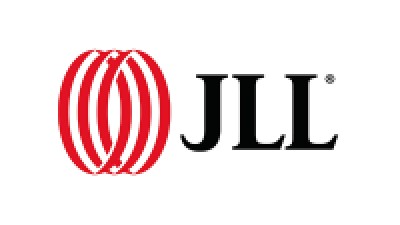‘Time To Put Strategies Into Action’: Sophisticated Capital Makes Its Move Into Multifamily
Several large deals unveiled this summer suggest that the lull in multifamily capital markets is nearing an end and providing a clear signal that the next liquidity cycle has started, said Tyler Sullivan, who leads JLL’s multifamily capital markets research division.
In June, KKR acquired more than 5,000 apartments from Charlotte-based Quarterra for $2.1B. In August, Equity Residential agreed to acquire 11 Sun Belt multifamily properties from Blackstone totaling 3,600 apartments for $964M. That same month, Blackstone announced it would acquire Apartment Income REIT for $10B in a move to take the publicly traded company private.
In September, AvalonBay raised $700M, with a large portion of the funds earmarked to “tie down land sites,” Sullivan said.
“These transactions drove the conviction that sophisticated capital is moving and it is time to put strategies into action,” Sullivan said. “Those who control the capital but were sitting on the sidelines are demonstrating an interest in real estate again.”
Lauro Ferroni, JLL head of U.S. capital markets research for the Americas, said a fear of missing out is driving investors to move while making sure their timing is right on the next liquidity cycle.
“This is not something we had the confidence to call six months ago, but at this point, the data is undeniable,” he said.
Sullivan and Ferroni spoke with Bisnow about the growth in institutional bidding, activity in the development pipeline and the health of housing across markets.
Institutional Capital And Construction Starts
“There’s an uptick in the share of deals where the institutional bidder is the highest bidder,” Sullivan said. “That’s in contrast to the last two years, when private capital dominated the landscape.”
Apartment construction starts slowed noticeably in the last 18 months, but the dearth of groundbreakings will be shorter than many anticipated.
“Some of the best development deals are beginning to pencil as the cost of borrowing has come down,” Sullivan said.
The ground-up development activity is visible in JLL’s equity placement advisory business.
“The volume of deals we have ready to launch is larger than this time last year,” Sullivan said. “A lot of capital was waiting, revving their engines.”
Floating-Rate Debt
Investors that took out floating-rate loans when rates were at rock bottom during the first two years of the pandemic ran into some challenges when interest rates rose and made it difficult to refinance. JLL estimates commercial real estate landlords have roughly $1.5T of debt coming due by the end of 2025.
“However, now that it has become clearer the economy is headed for a soft landing and interest rates are on a downward trajectory, we are seeing more floating-rate product again,” Sullivan said. “Previously, it was predominantly fixed-rate.”
Investors’ renewed confidence is visible in the kinds of debt they are comfortable taking on, he said.
Gateway Cities And The Sun Belt
Of all housing units recently delivered to the market, an overwhelming majority have been in the higher price tiers, while only 6% are workforce or naturally occurring affordable housing, Sullivan said.
The supply of higher-end units is especially pronounced in markets like Nashville, Phoenix and Las Vegas.
But while Sun Belt cities are seeing limited rent growth due to oversupply, gateway cities such as New York, Boston, Washington, D.C., and Chicago aren’t struggling as much with this issue.
“The outperformance in gateway cities has been the story of the year,” Sullivan said. “Meanwhile, cities in the Rust Belt don’t have an oversupply problem, but there is less conviction around job growth in these areas.”
Over the long term, the Sun Belt will continue to be a growth driver for multifamily and housing in general, Sullivan said.
“Young professionals continue to move to gateway markets after graduation, but once those individuals start thinking about starting a family and looking for more space, they tend to look to the Sun Belt because of its affordability,” Sullivan said.
That said, recent rent growth dynamics suggest the economic growth of Sun Belt markets isn't siphoning growth from gateway markets.
“The U.S. has talent nodes expanding in states including North Carolina, Tennessee and Texas,” Sullivan said. “It’s just another testament to the dynamism and resilience of the U.S. economy.”
Single-Family Rentals
Given the 4-million-unit undersupply of homes in the U.S., more people are choosing to rent, and the market is responding by delivering purpose-built single-family rental communities.
“We expect this trend to continue,” Sullivan said. “It’s harder to predict the long-term future of what will happen to the U.S.’ chronic undersupply of housing and whether it will get resolved.”
New Categories Of Housing
Real estate as an asset class was pressure-tested during the pandemic and again during the elevated interest rate environment, yet investors continued to allocate capital to it, Ferroni said.
“The desire to invest in real estate is an incredibly durable trend,” he said. “What is changing is how they are allocating across categories of real estate. Investors generally continue to trim their allocations into office, with the housing sector being a beneficiary.”
Investors are also broadening their definition of housing beyond multifamily rentals to include single-family rentals, student housing, senior housing and manufactured housing, he said.
They are also homing in on a relatively new category, attainable housing, that sits between market-rate multifamily and government-subsidized affordable housing.
“It’s less amenitized, with fewer frills, but it gets units to the communities that need them,” Ferroni said.
This article was produced in collaboration between JLL and Studio B. Bisnow news staff was not involved in the production of this content.
Studio B is Bisnow’s in-house content and design studio. To learn more about how Studio B can help your team, reach out to studio@bisnow.com.


